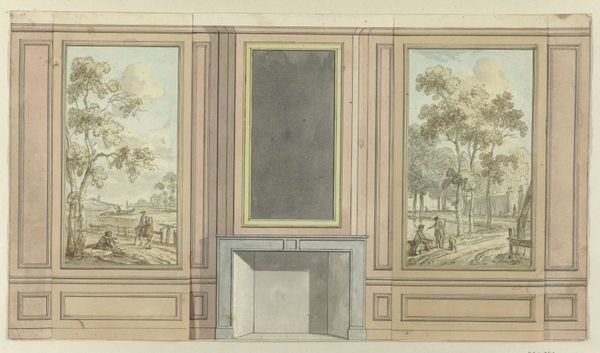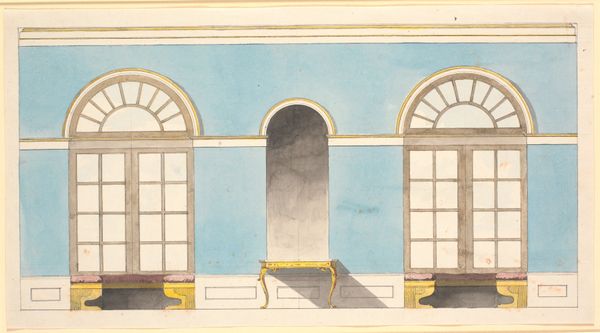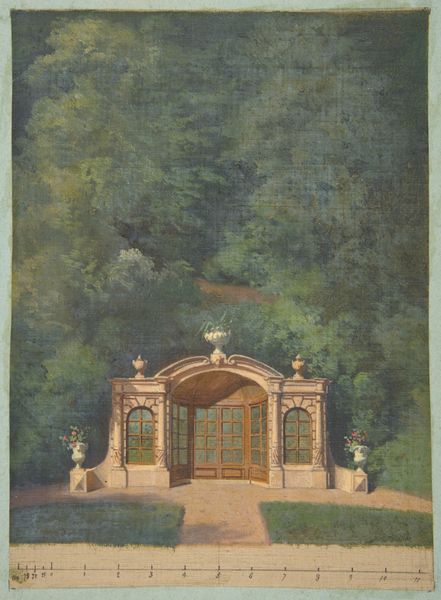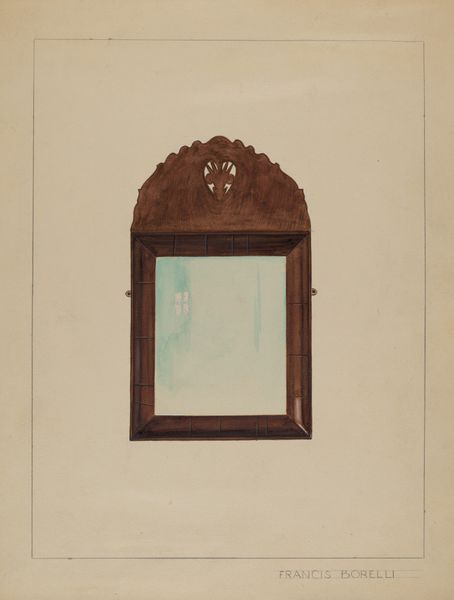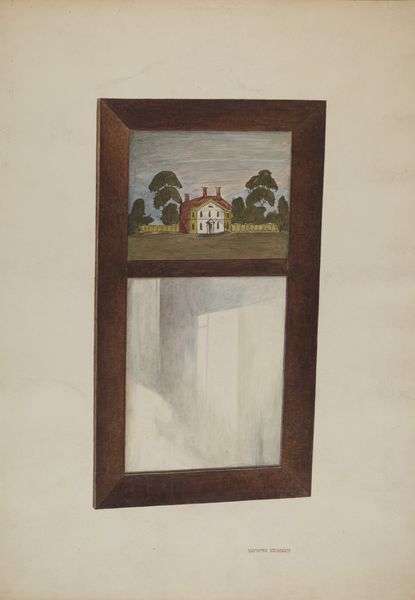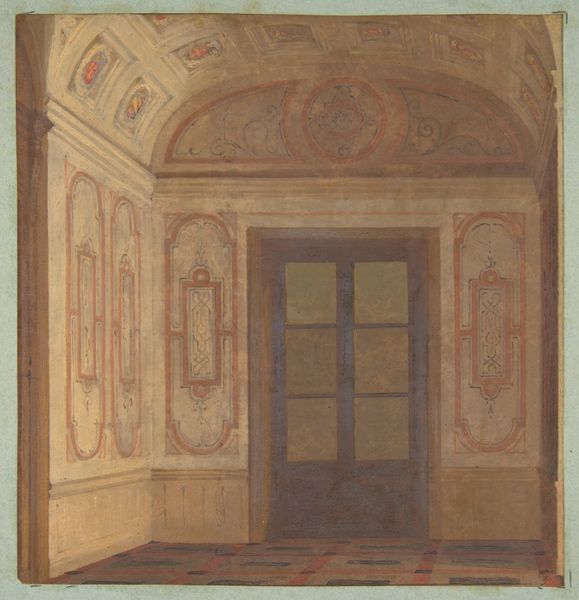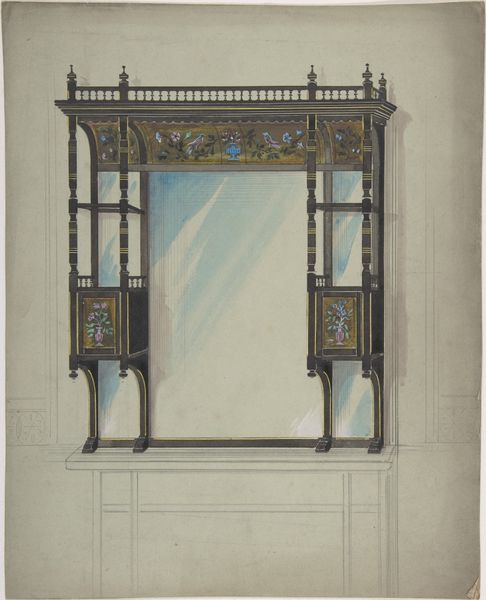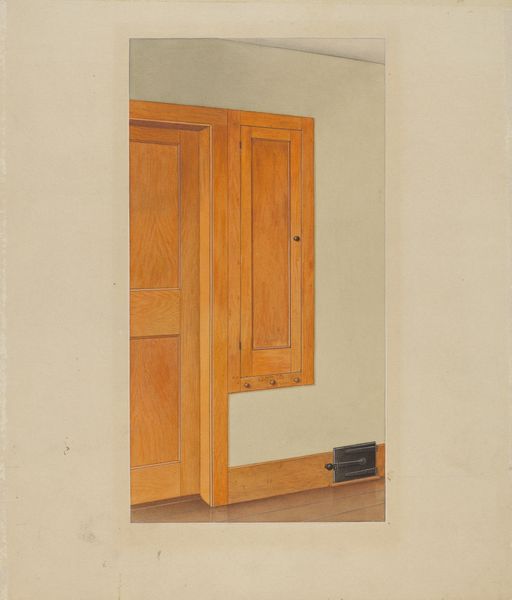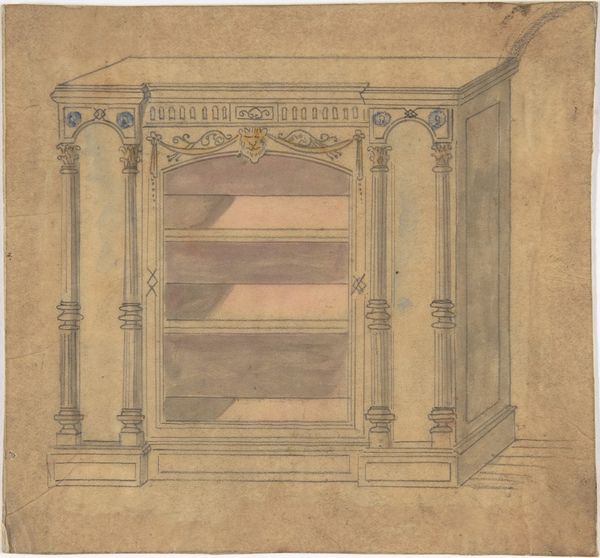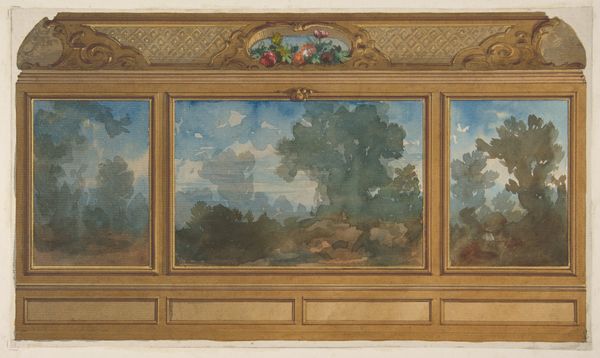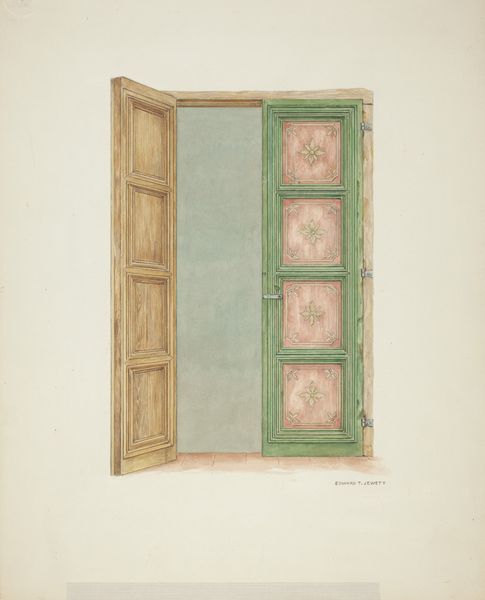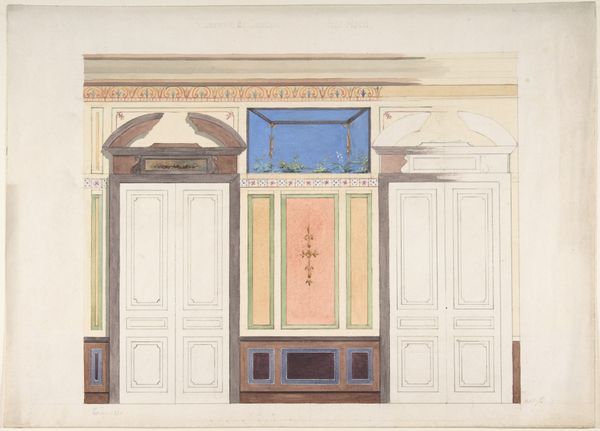
Design for the decoration of the dining room, 20 rue Matignon 1850 - 1900
0:00
0:00
Dimensions: sheet: 8 1/16 x 12 13/16 in. (20.4 x 32.6 cm)
Copyright: Public Domain
Curator: Looking at "Design for the decoration of the dining room, 20 rue Matignon," dating roughly from 1850 to 1900, and rendered in watercolor and drawing, the initial impression is rather somber, wouldn't you say? Editor: It is, markedly so. The dark wood panelling nearly subsumes the light conveyed in the garden scene between. Observe the tension established by the contrast. Curator: Indeed. And if we consider this in its social context, the rue Matignon, even then, would have signified a certain echelon of Parisian society. Decorative arts such as this proposal reflected a desire to domesticate, to bring nature within manicured walls. Editor: Precisely! Notice how the framing panels on either side mirror each other, suggesting balance and formality. But, this framing *also* encloses a more organic vision. Do the flourishing painted flowers offer liberation from domestic confines, or do the garden boundaries reflect an enforced idyllic vision? Curator: An interesting question. It’s compelling how Lachaise presents us with both natural and highly constructed motifs. We must think about the dining room as more than simply a site for consumption; it is performative space for projecting and reinforcing values. Editor: Consider also the lack of a central image in this composition. The absent painting creates tension between its garden and formal boundaries, leaving room for imagination or perhaps projecting wealth and societal importance. Curator: I concur. That vacancy offers the residents an opportunity for individualized meaning, layering personal history upon inherited prestige, a very subtle power play in plain view. Editor: So while our first impression conveyed sobriety, closer formal analysis suggests complexity, indeed tension between organic growth and manufactured ideals. Curator: A compelling argument. History gives art social meaning. Looking closely unlocks this vision!
Comments
No comments
Be the first to comment and join the conversation on the ultimate creative platform.
